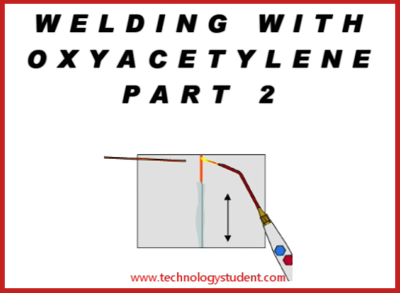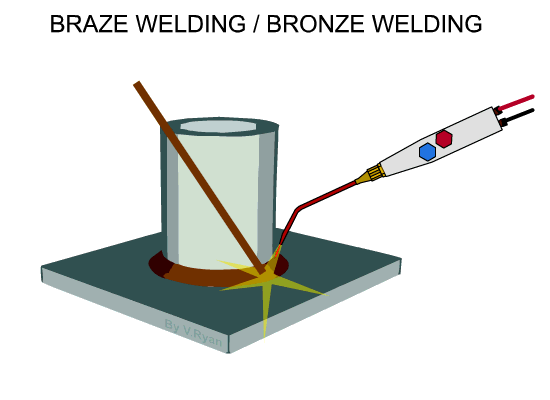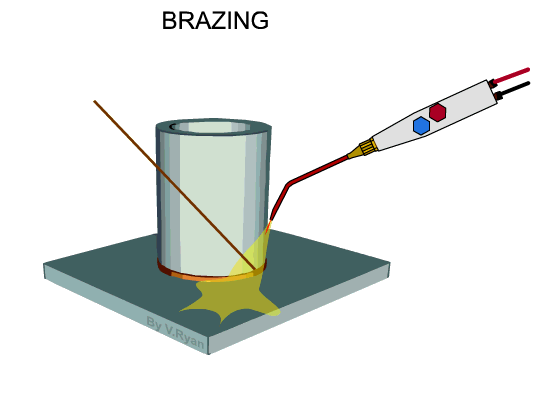| CLICK HERE FOR INDEX PAGE |
| BRAZE WELDING (BRONZE WELDING) AND BRAZING OXYACETYLENE |
| V. Ryan © 2016 |
| PDF FILE - CLICK HERE FOR PRINTABLE WORKSHEET ON BRAZE WELDING / BRONZE WELDING |
| PDF FILE - CLICK HERE FOR PRINTABLE WORKSHEET ON BRAZING |
| VIDEO - GAS WELDING – OXYACETYLENE - PART TWO |
 |
|
Oxyacetylene can be used to braze and to braze weld (bronze weld). These techniques are often confused, as they involve the use of the same equipment. |
| Bronze filler rod is an alloy composed of copper and tin. Brass filler rod is also an alloy, composed of copper and zinc. Either rod can be used. |
 |
|
The steel tube and steel plate have been heated to a dull red heat. The
‘bronze’ filler rod (coated with flux) is then introduced to the joint. It
flows onto the two surfaces, forming a ‘fillet’ around the joint, joining
the two surfaces. Braze / bronze welding provides a strong joint and is ideal of steel frames, where a certain amount of flexibility is required. The filler rod is broader than that used in brazing. |
 |
|
When brazing, flux is applied to the joint, to prevent oxidation of the
surfaces. The steel tube and plate are heated to bright red heat and the
brazing rod (filler rod) applied to the joint. The end of the filler rod
melts and flows around the joint, through capillary attraction. This gives a joint that looks like a ‘line’ of bronze. Brazing is ideal for manufacture of bicycle frames, as it does not ‘fracture’ as easily as steel welded joints. |
| Brazing and braze welding (bronze welding), can be used to join similar and also dissimilar metals such as: |
| Mild Steel - Galvanized Steel Stainless Steel - Copper Mild Steel - Stainless Steel Stainless Steel - Copper-Nickel Mild Steel - Cast Iron |
| CLICK HERE FOR EQUIPMENT AND PROCESSES INDEX PAGE |